
Albaicín: Granada's Timeless Moorish Quarter
Discover Albaicín, Granada’s enchanting Moorish quarter with its rich history, stunning architecture, and vibrant local culture, offering breathtaking views and delightful cuisine.
Nestled on a hillside overlooking the Alhambra, Albaicín is a captivating neighbourhood that transports you back in time with its narrow, winding streets, whitewashed houses, and lush gardens. Recognized as a UNESCO World Heritage Site, this ancient Moorish quarter is a treasure trove of history, culture, and stunning vistas. Walking through Albaicín feels like stepping into an old tale, where each corner holds a story and every alleyway beckons exploration. Central to Albaicín’s charm is its rich architectural heritage, which includes remnants of Arab baths, ancient mosques converted into churches, and traditional Andalusian homes known as carmens. Don't miss the Mirador de San Nicolás, a vantage point offering breathtaking views of the Alhambra, especially mesmerizing at sunset. Wander through the lively Plaza Larga, where locals and tourists mingle among tapas bars, shops, and market stalls, giving you a taste of Granada’s vibrant daily life. Albaicín is also a culinary delight, with an array of eateries offering authentic Andalusian cuisine. Savor delicious tapas, enjoy a cup of tea in a traditional tetería, or indulge in sweet treats from local bakeries. The blend of Moorish and Spanish influences is palpable not only in the food but in the atmosphere, making Albaicín a must-visit for any traveler looking to experience the heart and soul of Granada.
Local tips in Albaicín
- Wear comfortable shoes, as the cobblestone streets can be uneven and steep.
- Visit the Mirador de San Nicolás at sunset for the best views of the Alhambra.
- Explore early in the morning to avoid crowds and enjoy a quieter experience.
- Take a guided tour to fully appreciate the history and significance of the area.
- Try local delicacies in Plaza Larga and visit a tetería for an authentic tea experience.
Albaicín: Granada's Timeless Moorish Quarter
Nestled on a hillside overlooking the Alhambra, Albaicín is a captivating neighbourhood that transports you back in time with its narrow, winding streets, whitewashed houses, and lush gardens. Recognized as a UNESCO World Heritage Site, this ancient Moorish quarter is a treasure trove of history, culture, and stunning vistas. Walking through Albaicín feels like stepping into an old tale, where each corner holds a story and every alleyway beckons exploration. Central to Albaicín’s charm is its rich architectural heritage, which includes remnants of Arab baths, ancient mosques converted into churches, and traditional Andalusian homes known as carmens. Don't miss the Mirador de San Nicolás, a vantage point offering breathtaking views of the Alhambra, especially mesmerizing at sunset. Wander through the lively Plaza Larga, where locals and tourists mingle among tapas bars, shops, and market stalls, giving you a taste of Granada’s vibrant daily life. Albaicín is also a culinary delight, with an array of eateries offering authentic Andalusian cuisine. Savor delicious tapas, enjoy a cup of tea in a traditional tetería, or indulge in sweet treats from local bakeries. The blend of Moorish and Spanish influences is palpable not only in the food but in the atmosphere, making Albaicín a must-visit for any traveler looking to experience the heart and soul of Granada.
Iconic landmarks you can’t miss
Mirador de San Nicolás
Experience the stunning views of Alhambra and Sierra Nevada at the Mirador de San Nicolás, a must-see scenic spot in Granada's Albaicín district.
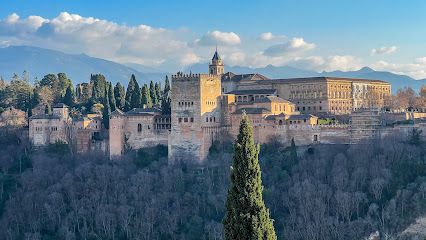
Mirador de San Cristóbal
Experience the awe-inspiring views of Granada at Mirador de San Cristóbal, a scenic observation deck perfect for capturing unforgettable moments.
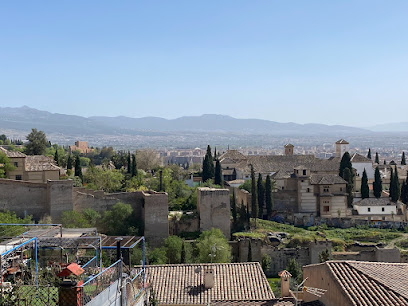
Palacio de Dar al-Horra
Explore the enchanting Palacio de Dar al-Horra, a historic gem in Granada's Albaicín, rich in Moorish architecture and cultural heritage.
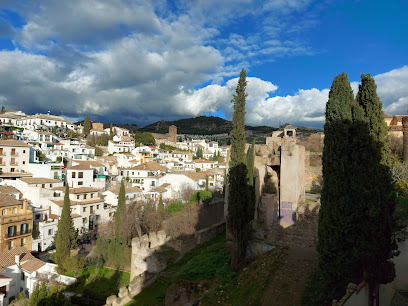
Carmen de la Victoria
Explore Carmen de la Victoria, a historical landmark in Granada's Albaicín district, offering stunning views and a peaceful garden retreat.
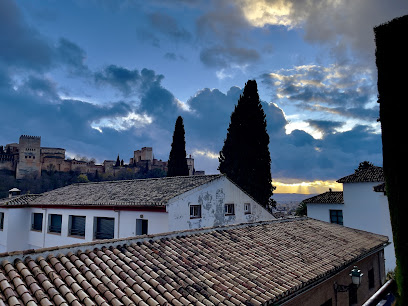
Albaicín, Granada
Explore the enchanting Albaicín in Granada, a UNESCO World Heritage site with winding streets, Moorish architecture, and stunning views of the Alhambra.

Mirador de la Cruz de Rauda
Experience breathtaking views of the Alhambra and Sierra Nevada at Mirador de la Cruz de Rauda, a must-visit scenic spot in Granada's Albaicín.
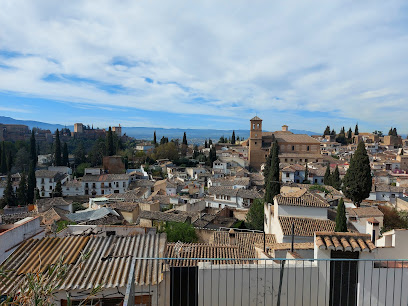
Aljibe de Trillo
Discover the Aljibe de Trillo, a historical landmark in Granada's Albaicín district, showcasing Moorish architecture and breathtaking mountain views.
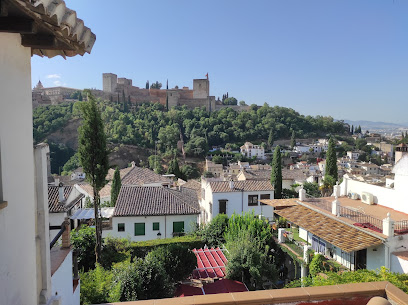
Aljibe de San Nicolás
Explore Aljibe de San Nicolás, a stunning monument in Granada's Albaicín district, offering breathtaking views of the Alhambra and rich historical significance.
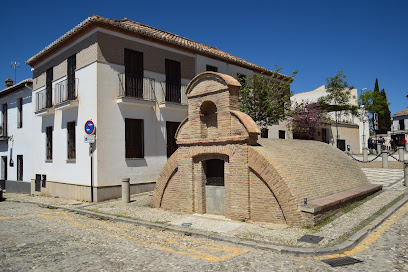
Albaicin
Explore the historic Albaicin neighborhood in Granada, where Moorish architecture meets stunning views and vibrant local culture.
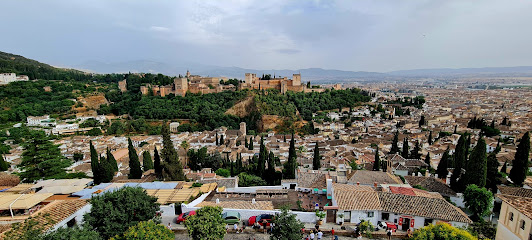
Superbe vue sur la ville
Discover breathtaking views of Granada from this hidden gem in the Albaicín district, perfect for photography and cultural exploration.
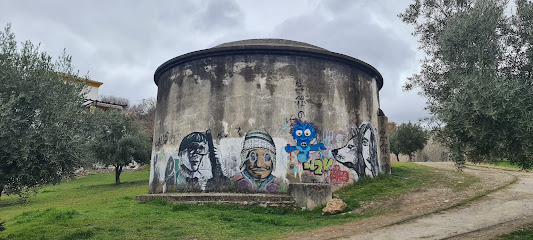
Unmissable attractions to see
Palacio de Dar al-Horra
Explore the rich history and stunning architecture of the Palacio de Dar al-Horra in the heart of Granada's enchanting Albaicín district.
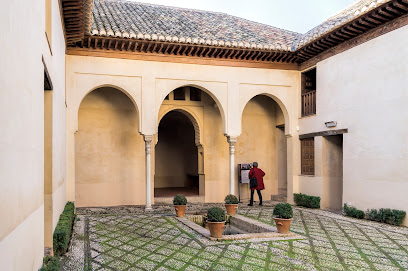
El Bañuelo
Explore El Baño del Alhambra, a historical landmark in Granada's Albaicín, reflecting the rich Moorish culture and stunning architectural beauty.
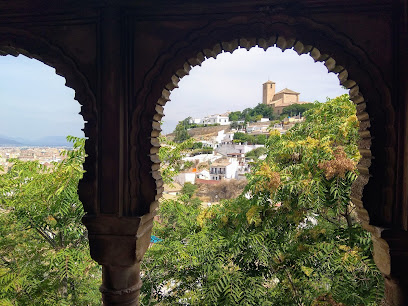
Fuente del Paseo de los Tristes
Experience the charm of Fuente del Paseo de los Tristes in Granada, where stunning Alhambra views and rich cultural ambiance await every traveler.
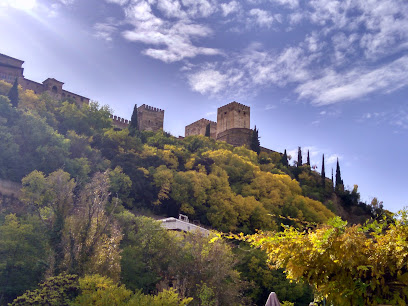
Albaicín, Granada
Discover the historic Albaicín neighborhood in Granada, a charming blend of Moorish heritage, stunning views, and vibrant local culture.
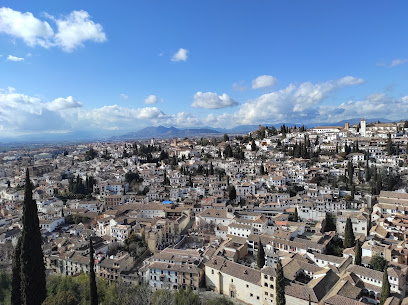
Aljibe del Rey
Explore the historic Aljibe del Rey in Granada, a stunning Moorish cistern showcasing exquisite architecture and rich cultural heritage.
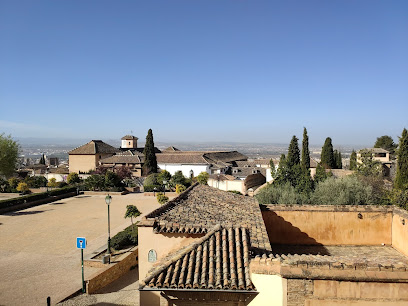
Aljibe de Trillo
Explore Aljibe de Trillo in Granada - A Historic Water Cistern and Architectural Marvel in the Enchanting Albaicín District.

Aljibe de San Nicolás
Explore the historic Aljibe de San Nicolás, a serene water cistern in Granada's Albaicín with stunning views of the Alhambra.
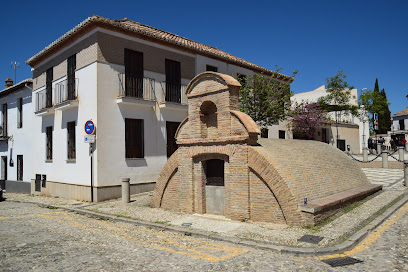
Essential places to dine
Restaurante Carmen El Agua
Discover authentic Mediterranean and Spanish cuisine at Restaurante Carmen El Agua, offering stunning views and unforgettable flavors in Granada's Albaicín.
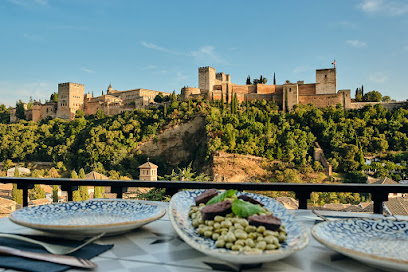
Restaurante Aixa
Discover delicious pizzas and authentic Spanish cuisine at Restaurante Aixa in the heart of Granada's charming Albaicín district.
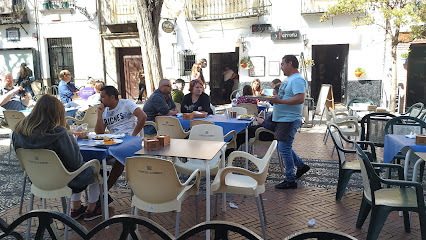
El Trillo Restaurante Granada
Discover El Trillo Restaurante in Granada - where Mediterranean flavors meet stunning views of Alhambra.
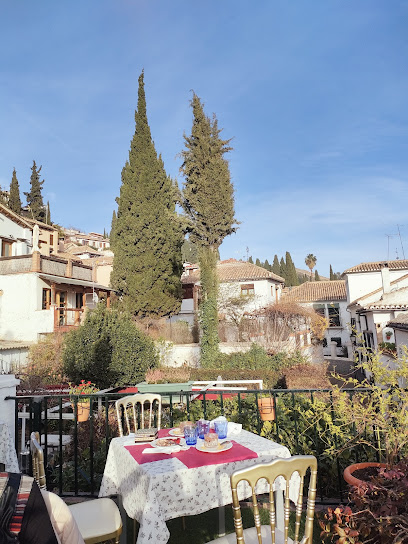
Las Tomasas
Discover Las Tomasas: A premier Spanish Mediterranean restaurant offering stunning views and exquisite cuisine in Granada's historic Albaicín district.
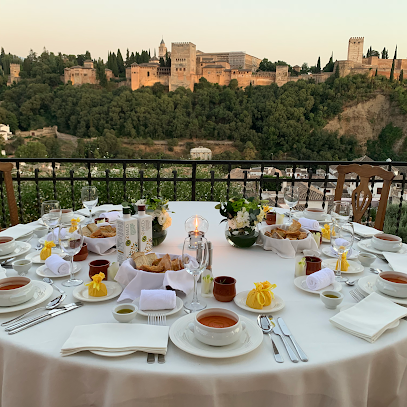
Restaurante Mirador de Morayma
Experience exquisite Mediterranean cuisine amidst stunning views at Restaurante Mirador de Morayma in Granada's Albaicín district.

Restaurante Carmen De Aben Humeya
Experience exquisite Mediterranean and Spanish cuisine with stunning views at Restaurante Carmen De Aben Humeya in Granada's Albaicín.
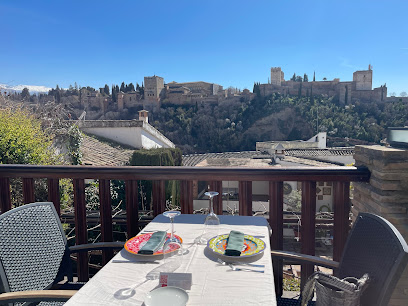
Restaurante Ruta del Azafrán Granada
Experience authentic Mediterranean cuisine at Restaurante Ruta del Azafrán in Granada's historic Albaicín district, where flavors meet breathtaking views.
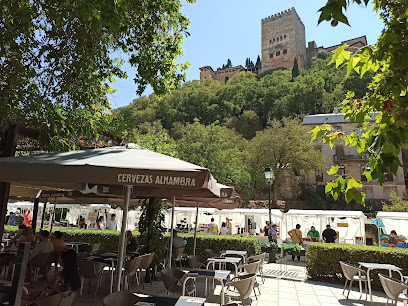
Carmen Mirador De Aixa
Experience exquisite cuisine with breathtaking views at Carmen Mirador De Aixa in Granada's historic Albaicín district.

Restaurante Carmen Verde Luna
Experience authentic Mediterranean flavors at Restaurante Carmen Verde Luna with stunning views of Alhambra in Granada's historic Albaicín district.
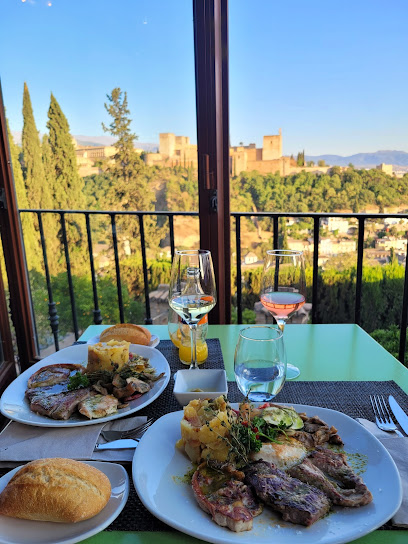
Mesón El Yunque
Experience authentic Mediterranean and Spanish cuisine at Mesón El Yunque in Granada's enchanting Albaicín neighborhood.
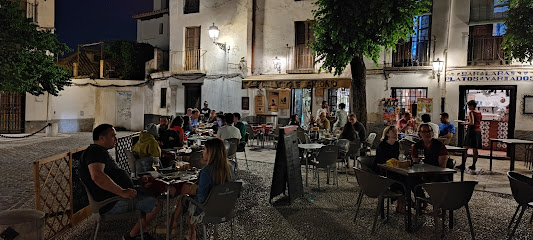
Markets, malls and hidden boutiques
Sueños de Agua
Explore Sueños de Agua in Granada for unique artisanal gifts and immerse yourself in local culture through stunning handicrafts.

Capricho Granadino
Discover unique Andalusian treasures at Capricho Granadino, a charming gift shop in Granada's historic Albaicín district, perfect for souvenirs and local artistry.
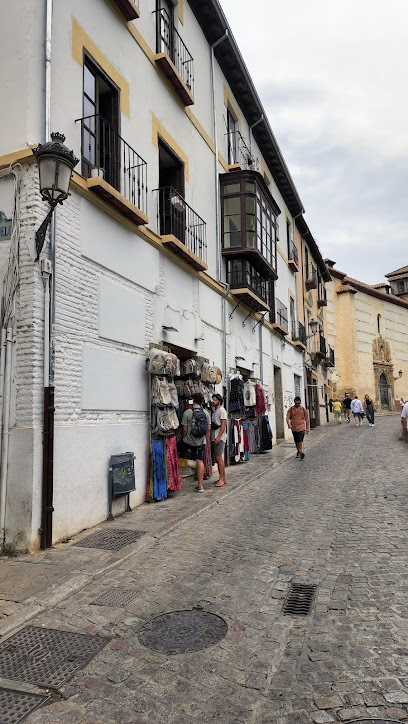
Nordin artesanías
Discover unique artisan crafts at Nordin Artesanías, a charming novelty store in Granada's historic Albaicín district.
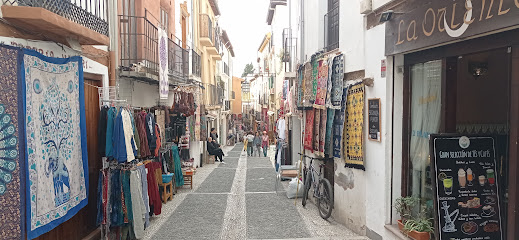
Por Amor al Arte Albayzin
Explore Por Amor al Arte in Albayzín, a treasure trove of local art and crafts that captures the essence of Granada's rich cultural heritage.
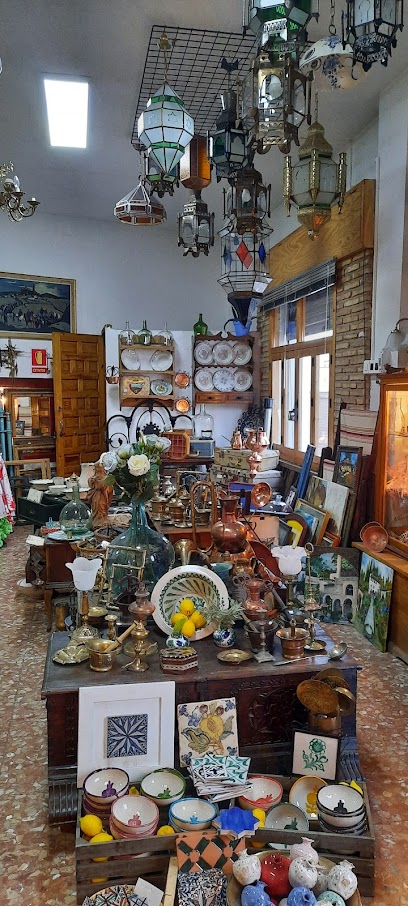
Almansor
Discover unique treasures at Almansor, a charming novelty store in Granada's historic Albaicín district, perfect for authentic souvenirs and local crafts.
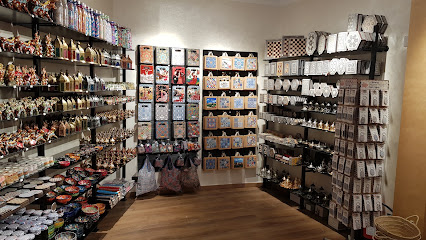
Artesanía agadir
Explore Artesanía Agadir in Granada, a vibrant variety store offering unique crafts and artisan treasures that reflect the city's rich cultural heritage.
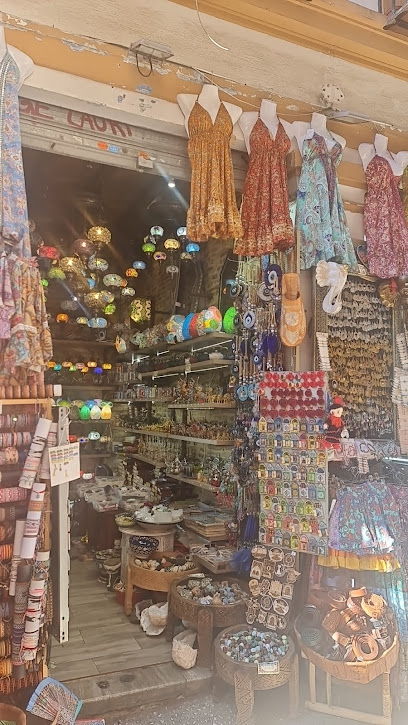
Artesanias Bayan Abio
Discover Artesanias Bayan Abio in Granada's Albaicín, where handcrafted souvenirs reflect the region's rich culture and artistry.
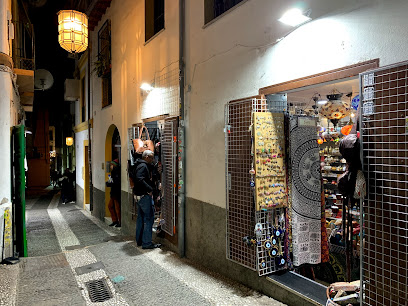
BAZAR AL-ANDALUS GRANADA
Explore Bazar Al-Andalus Granada for unique souvenirs and local crafts in the historic Albaicín district, capturing the essence of Andalusian culture.
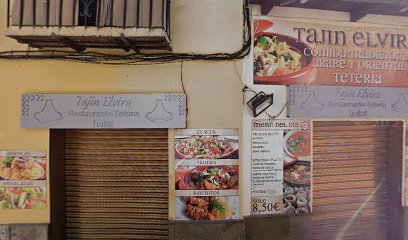
Shops
Discover the enchanting shops of Albaicín, where tradition meets contemporary flair in the heart of Granada's historic district.
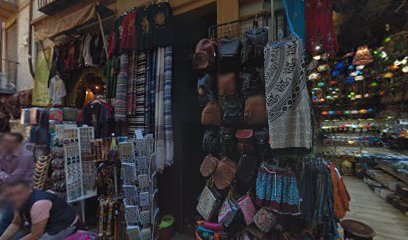
BAZAR GRANADA AL-ANDALUS
Explore the vibrant culture of Granada through unique gifts and local crafts at Bazar Granada Al-Andalus in Albaicín.
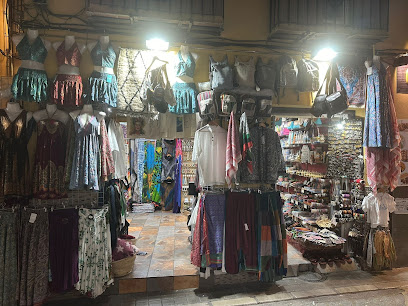
Essential bars & hidden hideouts
Bar Aliatar Los Caracoles
Experience the vibrant nightlife of Granada at Bar Aliatar Los Caracoles, where delicious tapas and local wines meet stunning views.
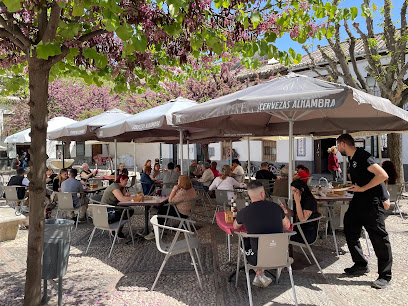
El Pozo
Experience authentic Andalusian flavors at El Pozo, a charming tapas bar in Granada's historic Albaicín district.
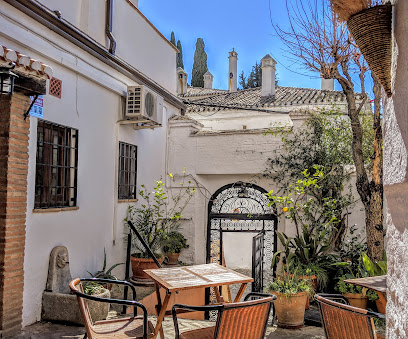
Casa de los Mascarones
Experience the vibrant culture and flavors of Granada at Casa de los Mascarones, a charming bar in the historic Albaicín district.
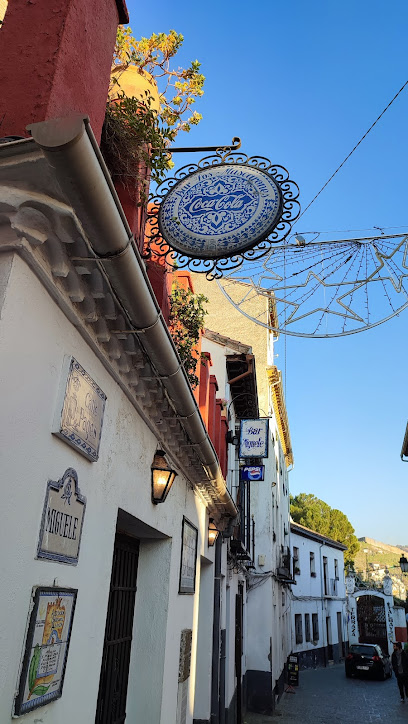
Bar Chaplin
Discover the vibrant atmosphere of Bar Chaplin in Granada's Albaicín, where craft beers and tapas create a unique local experience.
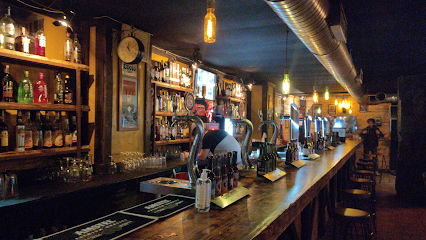
Café Bar Mirador de la Lona
Discover the charming Café Bar Mirador de la Lona in Granada's Albaicín, where Mediterranean flavors meet breathtaking views of the Alhambra.

Casa Piti
Discover Casa Piti in Granada's Albaicín, where delicious grill specialties meet breathtaking views and rich local culture.
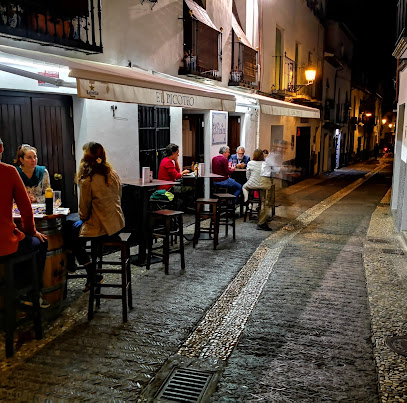
Kiki, Vinos y Otras Cosas...
Discover the rich flavors of Granada at Kiki, a delightful wine bar and restaurant in the heart of Albaicín, perfect for food and wine enthusiasts.
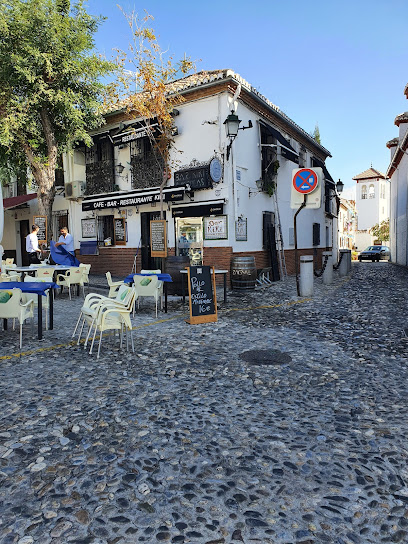
Café Bar La Penúltima
Experience the authentic flavors of Granada in the charming ambiance of Café Bar La Penúltima, nestled in the historic Albaicín district.
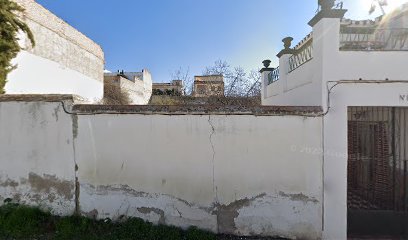
Drinks & Sun
Discover the vibrant atmosphere of Drinks & Sun in Granada's Albaicín, where refreshing drinks meet stunning views and rich local culture.
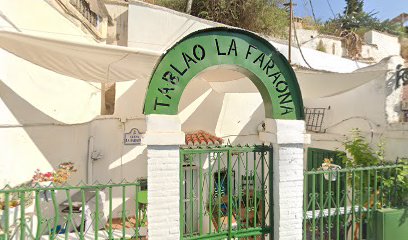
Bar Meridional
Discover the vibrant atmosphere of Bar Meridional in Granada's historic Albaicín district, where local flavors and culture come alive.
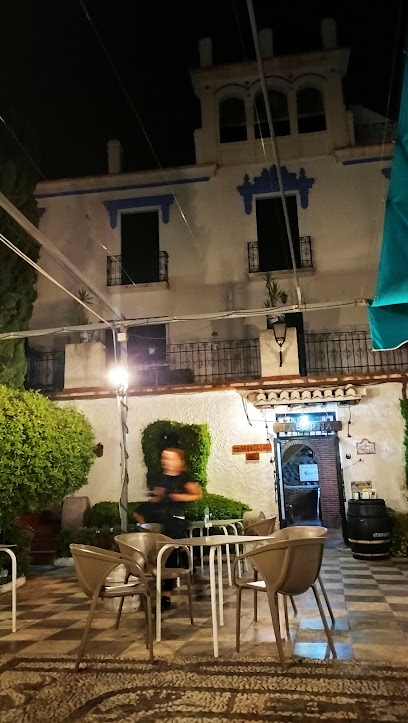
Local Phrases
-
- HelloHola
[oh-lah] - GoodbyeAdiós
[ah-dee-ohs] - YesSí
[see] - NoNo
[no] - Please/You're welcomePor favor/De nada
[por fah-vor/de nah-dah] - Thank youGracias
[grah-see-ahs] - Excuse me/SorryPerdón/Lo siento
[pair-don/loh see-en-toh] - How are you?¿Cómo estás?
[koh-moh ehs-tahs] - Fine. And you?Bien. ¿Y tú?
[byen. ee too] - Do you speak English?¿Hablas inglés?
[ah-blahs een-glays] - I don't understandNo entiendo
[noh ehn-tee-ehn-doh]
- HelloHola
-
- I'd like to see the menu, pleaseMe gustaría ver la carta, por favor
[meh goos-tah-ree-ah ver lah kar-tah, por fah-vor] - I don't eat meatNo como carne
[noh koh-moh kahr-neh] - Cheers!¡Salud!
[sah-loohd] - I would like to pay, pleaseMe gustaría pagar, por favor
[meh goos-tah-ree-ah pah-gar, por fah-vor]
- I'd like to see the menu, pleaseMe gustaría ver la carta, por favor
-
- Help!¡Ayuda!
[ah-yoo-dah] - Go away!¡Vete!
[veh-teh] - Call the Police!¡Llama a la policía!
[yah-mah ah lah poh-lee-see-ah] - Call a doctor!¡Llama a un médico!
[yah-mah ah oon meh-dee-koh] - I'm lostEstoy perdido/a
[ehs-toy pair-dee-doh/pair-dee-dah] - I'm illEstoy enfermo/a
[ehs-toy ehn-fehr-moh/ehn-fehr-mah]
- Help!¡Ayuda!
-
- I'd like to buy...Me gustaría comprar...
[meh goos-tah-ree-ah kohm-prahr] - I'm just lookingSolo estoy mirando
[soh-loh ehs-toy mee-rahn-doh] - How much is it?¿Cuánto cuesta?
[kwan-toh kwehs-tah] - That's too expensiveEs demasiado caro
[ehs deh-mah-syah-doh kah-roh] - Can you lower the price?¿Puedes bajar el precio?
[pweh-dehs bah-har ehl pree-syoh]
- I'd like to buy...Me gustaría comprar...
-
- What time is it?¿Qué hora es?
[keh oh-rah ehs] - It's one o'clockEs la una
[ehs lah oo-nah] - Half past (10)Las diez y media
[lahs dyehth ee meh-dee-ah] - MorningMañana
[mah-nyah-nah] - AfternoonTarde
[tahr-deh] - EveningNoche
[noh-cheh] - YesterdayAyer
[ah-yehr] - TodayHoy
[oy] - TomorrowMañana
[mah-nyah-nah] - 1Uno
[oo-noh] - 2Dos
[dohs] - 3Tres
[trehs] - 4Cuatro
[kwah-troh] - 5Cinco
[theen-koh] - 6Seis
[says] - 7Siete
[syeh-teh] - 8Ocho
[oh-choh] - 9Nueve
[nweh-veh] - 10Diez
[dyehth]
- What time is it?¿Qué hora es?
-
- Where's a/the...?¿Dónde está...?
[dohn-deh ehs-tah] - What's the address?¿Cuál es la dirección?
[kwal ehs lah dee-rehk-syohn] - Can you show me (on the map)?¿Puedes enseñarme (en el mapa)?
[pweh-dehs ehn-seh-nyar-meh (ehn ehl mah-pah)] - When's the next (bus)?¿Cuándo es el próximo (autobús)?
[kwan-doh ehs ehl proh-ksy-moh (ow-toh-boos)] - A ticket (to ....)Un billete (a ...)
[oon bee-yeh-teh (ah)]
- Where's a/the...?¿Dónde está...?
History of Albaicín
-
Albaicín's history is deeply rooted in the Moorish period, which began in the early 8th century when the Moors invaded the Iberian Peninsula. The neighbourhood was established as a residential area for the Muslim elite, characterized by narrow winding streets, whitewashed houses, and intricate architectural details. The influence of Islamic art and culture is evident in the design of the buildings and the layout of the neighbourhood, which was strategically positioned on a hill overlooking the Alhambra.
-
The Reconquista, culminating in 1492, marked a significant turning point for Albaicín. Following the capture of Granada by the Catholic Monarchs, the area began to undergo a transformation as Christian settlers moved in. Many of the Moorish residents were forced to convert to Christianity or leave. This period saw the construction of churches over former mosques, reflecting the cultural and religious shifts that took place during this tumultuous time.
-
In the 16th century, Albaicín became home to a significant Romani population, contributing to the rich cultural tapestry of the neighbourhood. The gypsies of Albaicín played a notable role in the development of flamenco, a passionate and expressive music and dance form that emerged from this region. Their influence can still be seen today in various cultural performances and festivals held throughout Granada.
-
In the late 20th century, efforts to preserve Albaicín's historical and architectural heritage gained momentum, culminating in its designation as a UNESCO World Heritage Site in 1994. This recognition helped draw attention to the neighbourhood's unique blend of Moorish and Christian influences, as well as its narrow streets, vibrant squares, and stunning views of the Alhambra and Sierra Nevada mountains.
-
Today, Albaicín stands as a vibrant neighbourhood that showcases the confluence of different cultures and histories. It is a popular destination for tourists seeking to experience its rich heritage, traditional tapas bars, and local artisan shops. The area hosts numerous cultural events, including the Fiesta de las Cruces and flamenco shows, which celebrate its diverse history while fostering a sense of community among residents and visitors alike.
Albaicín Essentials
-
Albaicín is easily accessible from other neighborhoods in Granada. If you're arriving from the city center, you can walk to Albaicín in about 20-30 minutes. Alternatively, local buses, such as Line 31, connect the city center to Albaicín, with stops in key areas like Plaza Nueva. Taxis are also readily available, and they can take you directly to various points in the Albaicín neighborhood.
-
Albaicín is best explored on foot due to its narrow, winding streets and steep inclines. Public transport options include the aforementioned buses, but they have limited access within the neighborhood itself. For those who prefer cycling, bike rentals are available in the city, and cycling can be a fun way to explore the flatter areas. However, be mindful of the steep paths and cobblestones, which may not be bike-friendly.
-
Albaicín is generally safe for tourists, but like any historic neighborhood, it’s advisable to remain vigilant. Petty crimes such as pickpocketing can occur, particularly in crowded areas like Mirador de San Nicolás. Avoid walking alone late at night in poorly lit areas, and be cautious while using your phone or displaying valuables in public.
-
In case of emergencies, dial 112 for police, fire, or medical assistance. The nearest hospital is Hospital Universitario Clínico San Cecilio, located a short taxi or bus ride away from Albaicín. It is recommended to have travel insurance that covers medical emergencies. Pharmacies are available throughout Albaicín for minor health issues.
-
Fashion: Do wear comfortable shoes for walking, as the streets are steep and uneven. Avoid overly casual attire when visiting religious sites. Religion: Do respect local customs, especially in churches. Always cover shoulders and knees. Public Transport: Do validate your bus ticket before boarding. Don't eat or drink while on public transport. Greetings: Do greet with a friendly 'Hola' and a smile. Don't be overly formal; a casual demeanor is appreciated. Eating & Drinking: Do try local tapas and wines. Don’t waste food; it's considered disrespectful.
-
To experience Albaicín like a local, visit the lesser-known viewpoints for stunning views of the Alhambra, such as the Paseo de los Tristes. Explore the winding streets early in the morning or late in the evening to avoid crowds and enjoy the ambiance. Don't miss local artisan shops for handmade goods. Try to engage with locals at small cafés where you can enjoy authentic Andalusian hospitality and perhaps even learn a few words of Spanish.
-
When visiting Albaicín, it’s essential to understand the cultural etiquette. Spaniards often greet each other with a kiss on both cheeks, but a handshake is also acceptable. In restaurants, it is customary to wait for the host to indicate where to sit. Tipping is appreciated but not obligatory; rounding up the bill or leaving small change is common.
-
Albaicín is one of the oldest neighborhoods in Granada, showcasing Moorish architecture and a rich history. Understanding its historical significance can enhance your visit. Take time to read about the Nasrid dynasty and the Reconquista, which shaped the area's culture. Consider joining a guided tour to gain deeper insights into the history and stories behind this captivating neighborhood.
Nearby Cities to Albaicín
-
Things To Do in Almeria
-
Things To Do in Ronda
-
Things To Do in Catalan Bay
-
Things To Do in Moorish Castle
-
Things To Do in Casemates Square
-
Things To Do in Gibraltar
-
Things To Do in Main Street
-
Things To Do in St. Michael's Cave
-
Things To Do in Alameda Botanic Gardens
-
Things To Do in Queensway Quay Marina
-
Things To Do in Gorham's Cave Complex
-
Things To Do in Europa Point
-
Things To Do in Seville
-
Things To Do in Murcia
-
Things To Do in Tetouan








